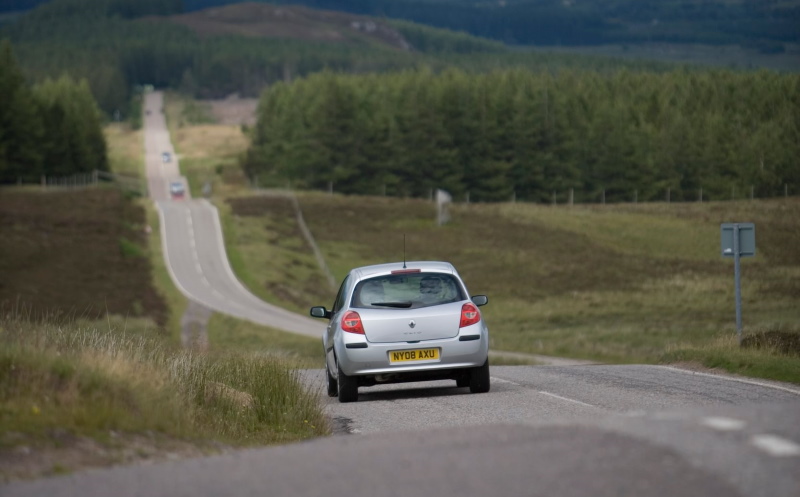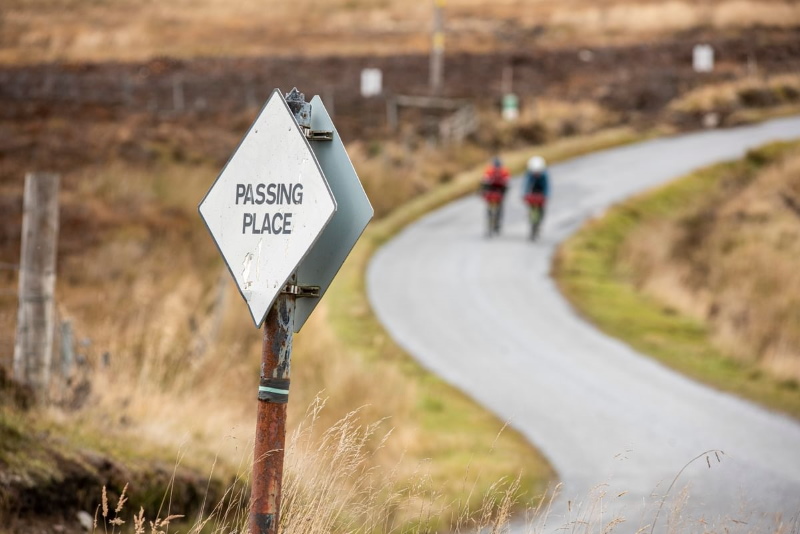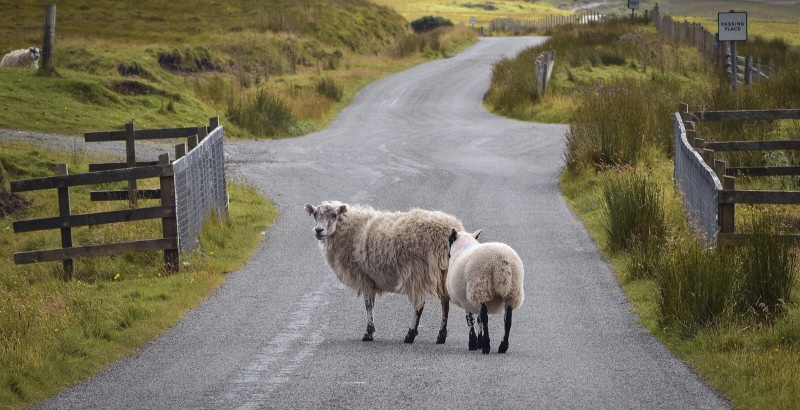Did you know there are over 2500 miles of single track roads in the Scottish Highlands? Here are a few tips for using them safely.
The single track roads around Loch Ness are a pleasure to drive on when you follow some simple etiquette and unwritten rules. It’s partly due to the terrain and partly down to the sparsely populated area around Loch Ness and Inverness, that so many single track roads have survived from being upgraded. On very quiet roads there is little pressure on local authorities to upgrade them. But for those of us who enjoy driving on single track roads, that’s no bad thing. Plus, it’s a great way to see some of the local wildlife. It’s a fact that we’ve seen more pine martens when driving these roads than anywhere else.
For visitors to Scotland who have never had the pleasure of driving on single track roads, we’ll try to alleviate some of your concerns. We know these roads can be daunting for first time drivers, so we’re here with some local tips.
Driving on the left
It is important for visitors to remember that we drive on the left in Scotland. It’s easy to forget when there is only one lane!
A single track road is as it sounds. A road usually wide enough for single file traffic, but not always. In places, the single track will change to a two way normal road.Then sometimes, just as you start to relax, it changes back to single track again! Just be aware of that and be ready to give way when it does.

Passing Places
Along the length of the narrow sections, every 200 meters or so, at appropriate places, there are small laybys. These are for use when passing cars approach from the opposite direction, to allow cars to pass each other. These passing places are marked with a white square or white diamond shaped signposts. They may be on either side of the road. In general, the car that is closest to a passing place pulls in, either into or opposite the passing place and waits for the oncoming car to pass.
During the daytime you will always get a thank you wave from the other guy and at night you will get a very short flash of lights as a way of acknowledging your courteous behaviour. And you may wish to do likewise if someone gives way to you.

Convoy Driving
On occasion, you may give way to or pass an oncoming convoy of a dozen or so cars all travelling bumper to bumper.
Usually, this is because the guy at the front of the line is a careful driver, who naturally drives slower than your average driver and has his eyes so fixed on the road ahead that he either doesn’t bother or can’t find time to look in his mirror to see what’s behind. So the rest of the convoy have to just follow the lead car, because they can’t overtake unless the lead car stops in one of the passing places to let them past.

Some Rules of the Road
-
Use the passing places to let oncoming cars AND cars behind you to pass.
It really doesn’t have to dent your ego to do this! If you try to outrun the car behind, you will end up driving at breakneck speed because the guy behind is always able to keep up with the front car. After all, it’s the front car that will always cop it on these roads. Check your mirror frequently and if someone is close behind you, let them pass by pulling into one of the passing places – don’t leave it until he is flashing his lights and hooting his horn out of frustration. -
Don’t use the passing places for parking.
They are essential for passing, so don’t obstruct them. Though it is acceptable to stop briefly for photo or phone call taking. Some laybys are longer than normal passing places and usually this is the place to stop for picnics and driving breaks. Don’t try to use the verges to pull onto as they are almost always soft and squidgy and it is easy to get stuck and often makes a muddy mess all over the road. -
Keep your speed down to safe levels.
The general speed limit is 60 miles per hour on these roads but that doesn’t mean it’s always safe to go that fast. 50 mph is more relaxing when there is so much wildlife around, especially on the South Loch Ness road, animals often want to cross the road just in front of you, so please be aware. You will be rewarded with some excellent sightings and have much more chance of avoiding killing a crossing deer or squirrel.
Travelling around Loch Ness and Inverness
We hope this article has helped allay any worries you may have about our single track roads. You will find local drivers very courteous, too.
For more information, our website has a comprehensive travel section including car hire, flight times, transport and maps.

